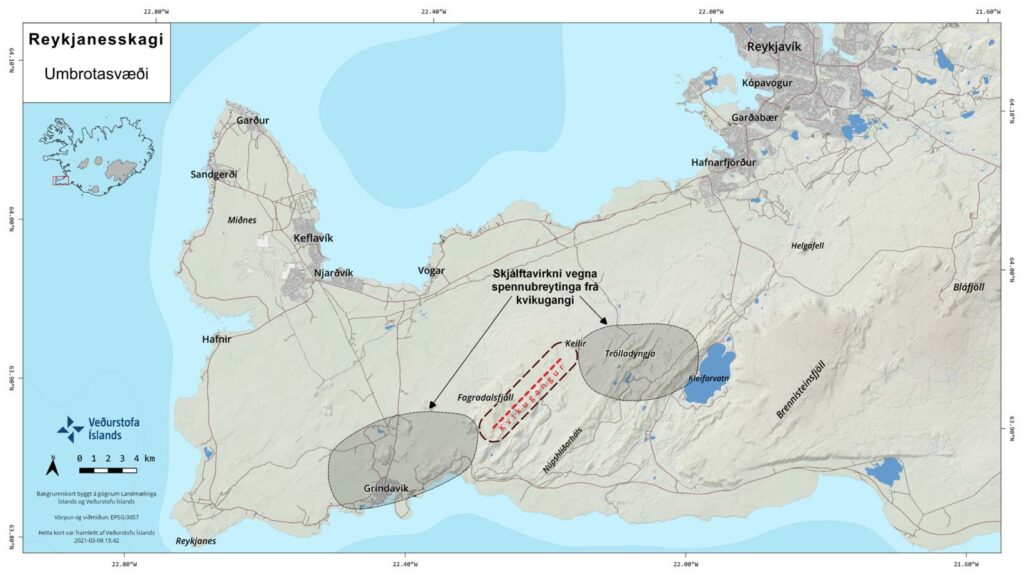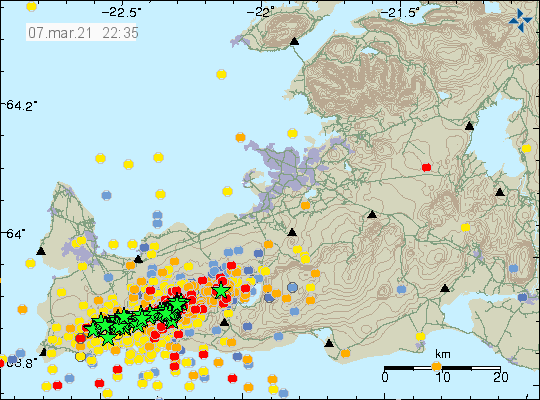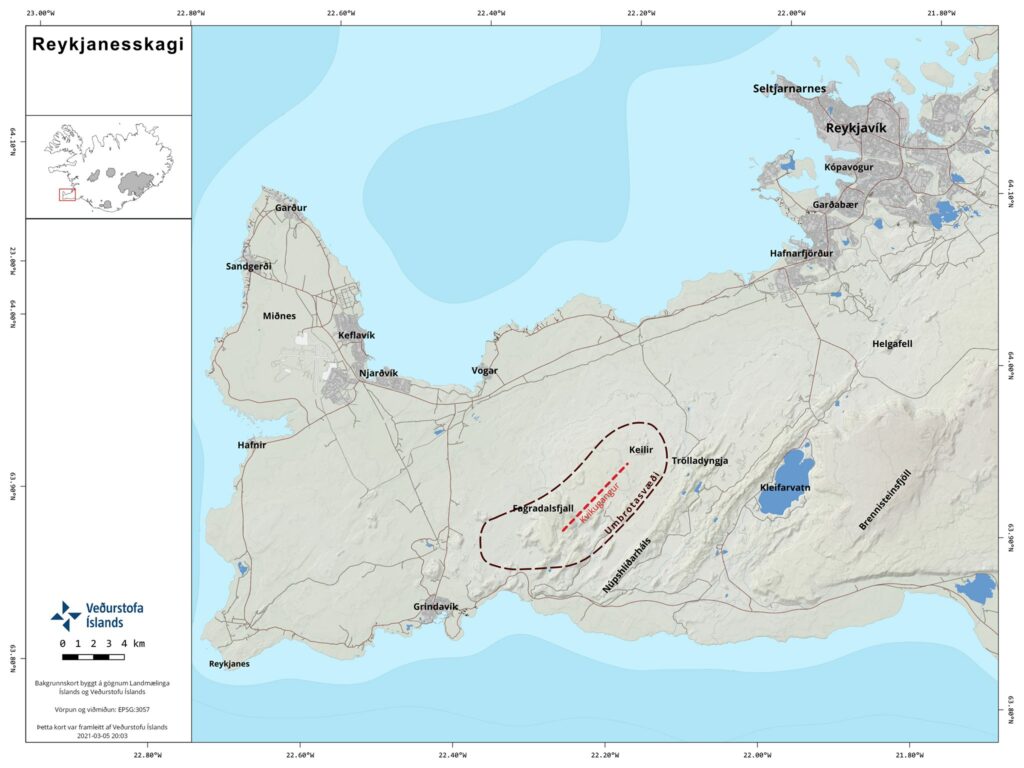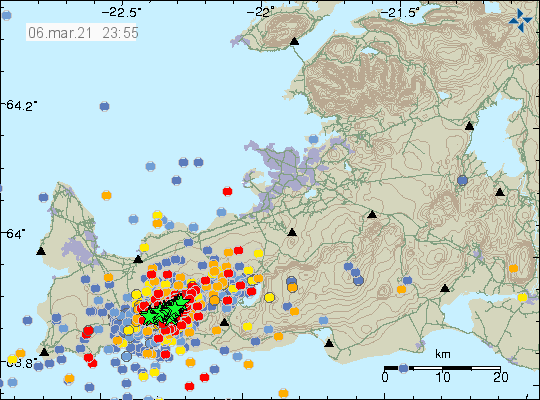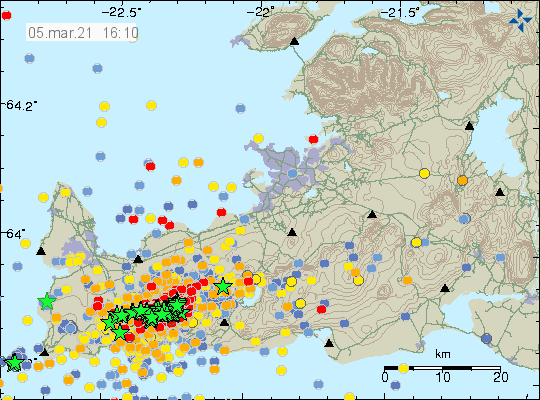This is a short article on the activity in Fagradalsfjall volcano. This situation is developing quickly and it is impossible to know what happens next.
During the night of 9-March-2021 from 05:20 UTC until around 07:00 UTC an harmonic tremor pulse was detected by Icelandic Met Office. This shows that the magma is still expanding into the Earth crust below Fagradalsfjall mountain and according to Icelandic Met Office it looks like the dyke is expanding in south direction but it is going to take a day or two to confirm that with GPS data.

There have been fewer stronger earthquakes in last few days. While the there are fewer strong earthquakes the amount of earthquakes has not really dropped in any number, most earthquakes are small in magnitude and only few reach magnitude above Mw3,0. This quiet period is not expected to last for any amount of time while magma continues to be injected into the crust of Fagradalsfjall volcano. There continues to be a high risk for earthquake with magnitude Mw6,0 to Mw6,5 along with risk of Mw6,5 earthquake in Brennisteinsfjöll volcano. Currently no magma movement is being detected in Reykjanes volcano, Krýsuvík volcano or Brennisteinsfjöll volcano.

